The LABORERS PROVISORY(Simbirsk province) — local issue of 1920, the revaluation of plying brands in the ratio 1:100,— handwritten in red ink the new denomination "1 RUB" on the stamp Russia 1 kopecks.

The laborers provisory
The LABORERS PROVISORY(Simbirsk province) — local issue of 1920, the revaluation of plying brands in the ratio 1:100,— handwritten in red ink the new denomination "1 RUB" on the stamp Russia 1 kopecks.

The laborers provisory
The MAIN POSTAL AFFAIRS BOARD (GPDP) — Russian state body in charge of the organization and activities mail. Founded in the late 18th century from the post office, formerly the College of foreign Affairs. After the founding in 1802 of the ministries GPDP entered the Ministry of the interior, in 1830-1865 years acted independently, in 1865-68 and 1880— 81 years — as part of a separate Ministry, and in the years 1868-1880 and 1881 again, the Department of the Ministry of internal Affairs, in 1884 United with the Telegraph office in the Main administration of posts and telegraphs, part of the Ministry of internal Affairs. Led HPDP was the Director. Initially, the management of the postal service was carried out on 3-step scheme: GPDP — post offices — post office and expeditions. In 1830, the provincial post offices (other than capital — in St.-Petersburg and Moscow) was abolished, and instead established the post of the district, the remaining run GPDP. Emblem GPDP — 2 post horn — was reproduced on stamps of Russia.
The MARKED CARDS is the collective name of various postcards with napechatana on them marks of postal payment, usually issued in the form of stamps.
The maximum card — the object of collecting of a special area of the modern philately — maximaphily. The maximum card has 3 main elements and represents the art of the post cardon the picture side of which is pasted a postage stamp, the plot coincides with the illustration card. Postage stamp on the card repaid postmark. The time and place of cancellation and reason match the story cards and postage stamps. In accordance with the provisions of maximaphily illustration and drawing postage stamps must have a common action or the same elements. Full (identical) match the picture cards and stamps possible in the case when they are created on the same source material (for the same reproduction, photography, etc.).

The maximum card USSR stamp dedicated to the masterpieces of the Hermitage
The MESSENGER — walking or horse-riding people, delivering news, orders, letters. In Russia, the word Messenger spread from the middle of the 14th century and was used until the early 18th century, when it was replaced by the words courier and courier.
The non-competitive CLASS —the name of the exhibition class in philatelic exhibitionsin which displays the collections that are not subject to competitive assessment, for example, the exhibits of the jury members, certain officials and others. List of exhibits non-competitive Class, set by the organizing Committee of the exhibition.
The up zubtsovku OFFICIAL — title philatelic perforation, commissioned by the postal administration (usually centralized), in contrast to the local and private zubtsovkimade on the same postage charge.
The OLDEST MAIL — the earliest service communication in the ancient world. Originated about 5000 years ago in ancient Mesopotamia (see Clay's letter) and Egypt. Already under the pharaohs of the fourth dynasty (2900-2700 BC) service Hiking (walkers) and horse messengers provided communication for military roads with Libya, Ethiopia and Arabia. The postal service Hiking and horse riders was organized in the VI century BC in China. In the 6th century BC created a clear system of postal communication in ancient Persia (see Angaran). Good land and sea postal services were established in the States of Ancient Greece. The huge, branched acting according to a clear regulation of the mail communication system "Cursus publicus" was created in Ancient Rome.
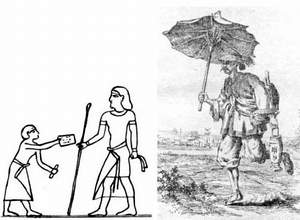
Ancient Egyptian and ancient Chinese paintings depicting the activities of the mail.
The PAINT EMERGES THROUGH the PAPER, traces of paint, which printed the picture — philatelic characteristic of the reverse side of stamps. The reasons for this phenomenon most likely to be properties of paper (poorly bonded, porous). Defect of stamps usually is not.
The PAINT is GLOSSY — the name of the paint used in printing and creating printed impression effect of light reflection, Shine, gloss. In the USSR, the glossy Paint was used for multi-color printing illustrations of the marked postal cards. In some countries, the glossy Paint was used and printing postage stamps.
The PAINT is GOOD — philatelic characteristic of the qualitative state signs of postal payment related to the safety of printing inks. The degree of preservation of paints is determined by freshness — fresh paint (no signs of tarnishing, soiling, dust), brightness — bright paint (no signs of discoloration, decomposition of the individual components of the paint), saturation — paint intense (in intensity of the paint close to the original).
The PAPER is DENSE — the collective name of different varieties of thick paper increased density; usually absorbs the paint. Thick paper used for various types of metallographic printing (for example, for engravings on steel). Thick paper used for printing of stamps (for example, USSR 1938 "20th anniversary of the red Army and Navy of the USSR" — No. 588-593, etc.).
PARCEL—
1. Mail printed publications, business papers or other items, sizes, weight and packing which conform to certain rules. Parcels are divided into internal (local, out of town) and international, as well as categories and categories of mail. The maximum weight of Packages not exceeding 5 kg. Parcels forwarded at special rates, and the amount of postal fee is set depending on the facilities and Parcels to domestic or international categories, discharge, mass. Unit weight fee for Parcel — 50 g.
2. Special packing in the form of tape for mail — parcels. In some countries Parcels were released printed on them by the signs of postal payment. These marked Packets are philatelic objects (refer to solid things). In Russia marked Packages were published from 1890.
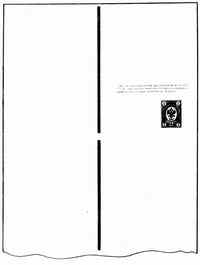
The Post (Russia)
The PHOTOGRAVURE — a photomechanical method of gravure printing. The transparency of the original is copied onto a special color paper, superimposed on a copper plate which is then etched. When the photogravure production of postage stamps were used only in the early 20th century (e.g. in Bavaria). Currently, instead of Heliogravure widespread printing doctor blade deep.
The power of ATTORNEY TO RECEIVE MAIL — a type of postal documentation. In some countries registration must be paid by postage stamps, which are pasted on the power of attorney. In such cases, the results of mail power of Attorney to receive mail is considered as a form of additional postal services.
AMIENS the provisional stamps[Amiens, France]. In may 1909 during a strike of postal employees chamber of Commerce of Amiens organized its own postal service. May 13 released a special stamp of 10 centimes with the inscription (FR.) "The chamber of Commerce. Amiens," which was used for the additional postage. Withdrawn from circulation 19.05.1909.
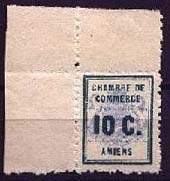
Postage stamp of Amiens
PUBLICATION INFLATION — name of post philatelic publications of various countries during the monetary inflation (issues Germany 1921-23 years, Hungary, 1945, 1946, and others). The publication of inflation are in circulation for a limited time, as their values very quickly lag behind the continuously increasing postal rates. The remains of unsold copies of a Publication get the inflation overprints of new values, often reaching astronomical figures.
The QUEENSLAND [Quensland] — a former British colony since 1901 — the Australian Union. The first stamps were issued 01.11.1860, had previously used the stamps of New South Wales. In 1861, issued a special stamp for registered items, 1900 — postal-charity stamps. The release marks continued until 1908, 1913 in circulation stamps of Australia. In 1871-79 years as a mail used stamps.
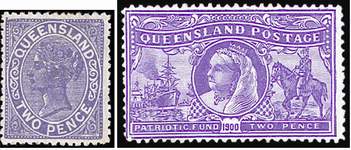
Postage stamps of Queensland
The REAPERS — the name of the standard philatelic stamps of Hungary 1916-24 years with the image of the reapers in the field.
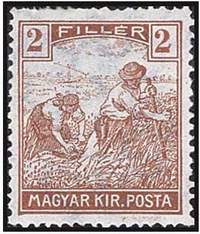
"The reapers"
ADDRESSEE— the person or organisation to whom addressed (directed), the mailing, the recipient of the shipment.